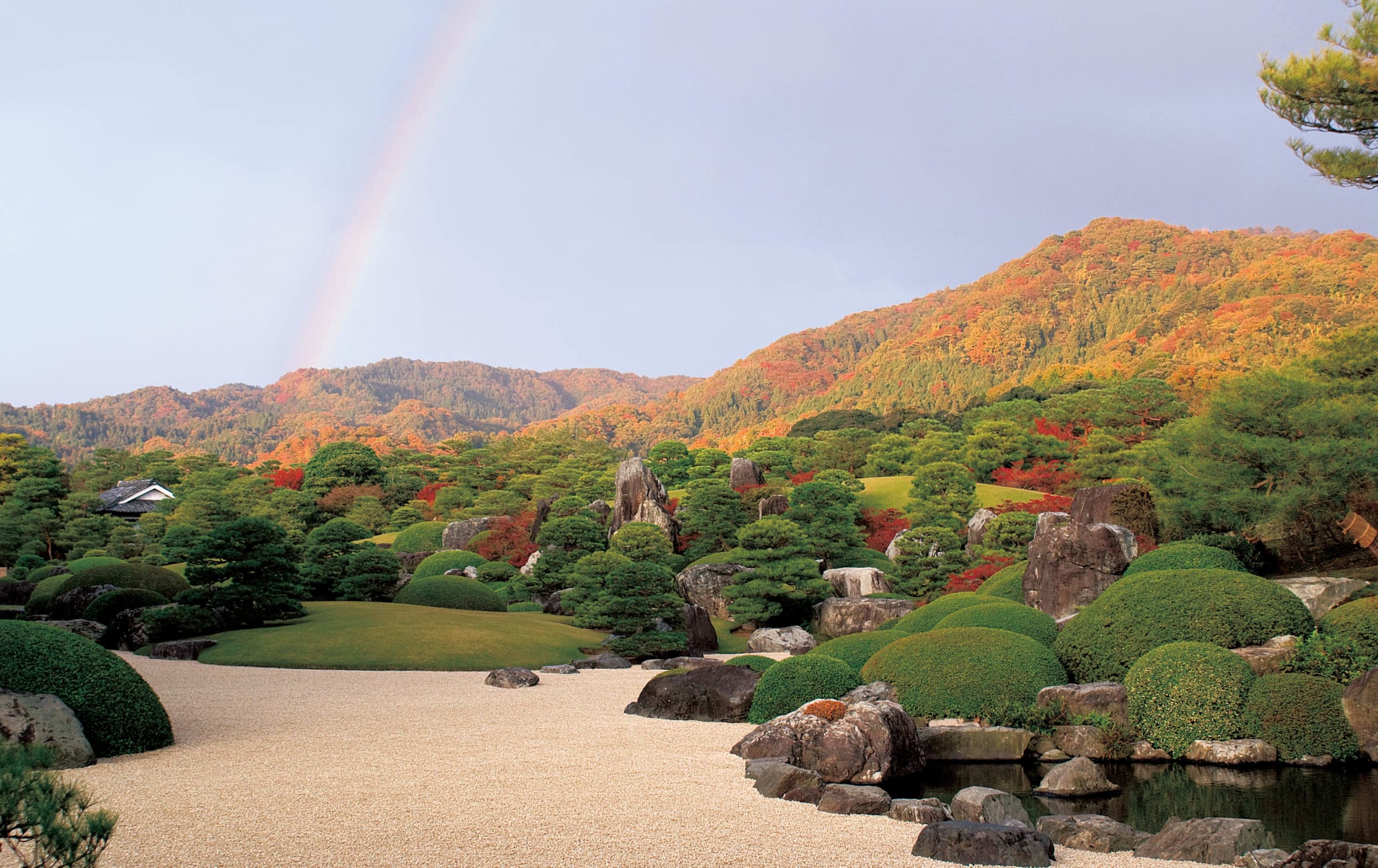©︎Adachi Museum of Art
Famous for its gardens as well as its art
The Adachi Museum of Art was founded by Zenko Adachi, a local businessman who believed that a Japanese garden should be seen as a living painting. The museum realizes this concept through the artful juxtaposition of paintings by modern Japanese masters inside with the extensive gardens outside.
Don't Miss
- Impressive artworks by the pioneers of modern Japanese art styles from the Meiji period (1868-1912), Taisho period (1912-26) and Showa period (1926-89)
- The serenity of beautiful Japanese gardens
- The ruins of a castle once considered one of the most fortified in Japan
How to Get There
The Adachi Museum of Art is accessible by bus from Yasugi Station.
The museum is located in the countryside outside Matsue but offers a free shuttle bus to and from Yasugi Station, which is a 15-minute express train ride from Matsue or 24 minutes by local train.

©︎Adachi Museum of Art
Living paintings of diverse tastes
The museum's 165,000 square meter garden is made up of a variety of gardens each in a different style. They are mainly viewed from inside the museum. The most iconic of the gardens here is the White Gravel and Pine Garden, an immaculate landscape with a waterfall in the far distance behind the almost abstract contrast of green and white.
There is a moss garden, a pond garden, and a dry garden. The appearance and character of each garden change dramatically with each of the four seasons. The windows, some expansive, some smaller, perfectly frame your views to create “living paintings.”

©︎Adachi Museum of Art
When it's time for refreshment
There is a tea room in the museum where you can enjoy matcha green tea and Japanese sweets as well as two cafes where you can take a break and enjoy food and drink while enjoying the views. Cafe Midori looks out on the Dry Landscape Garden, and Cafe Taikan offers a view of the Pond Garden.
The art on the walls
The artwork on display also changes with the seasons and is selected from the museum's collection of around 2,000 pieces by modern and contemporary masters of traditional Japanese art.
The works of Yokoyama Taikan (1868-1958), credited as one of the founders of the Nihonga style of painting, are heavily represented. You will also see works by Takeuchi Seiho, Hashimoto Kansetsu, Sakakibara Shiho, and dozens more well-established Nihonga painters.
Folk art from major artists
In April 2020, in commemoration of the museum's 50th anniversary, the Rosanjin Hall was built to display approximately 120 pieces by Kitaoji Rosanjin (1883-1959), including ceramics, seal engravings, calligraphy, and paintings. The new building houses approximately 100 to 200 works, including representative works by leading contemporary Japanese artists. Some of the pieces include winners of the Adachi Museum of Art Prize, which was started in 1995 to recognize up-and-coming talent.
The ruins of a once-impregnable castle
Only two kilometers from the museum are the ruins of Gassantoda Castle, one of the top five mountaintop castles in Japan. The castle was dismantled when Horio Yoshiharu decided to relocate and build Matsue Castle as the center of his domain.
Climb up past fortified temples and the great stone walls of the battlements, to reach the very top, which soars over the valley. Here, you will realize why it was known as the most impregnable castle of its age.
A temple with a famous name but centuries older than its namesake
Not far from Yasugi, where the shuttle bus to the Adachi Museum starts and ends, is Kiyomizu Temple. Sharing the same name as the famous temple in Kyoto but centuries older, this mountain temple has the only three-story wooden pagoda in the region. From the top, you can survey the surrounding forested countryside.
The temple offers several experiences conducted in English by reservation. A restaurant within the grounds serves shojin ryori, the traditional vegetarian cuisine of the Buddhist monks, and you can try your hand at Zen meditation or sutra copying.
























































